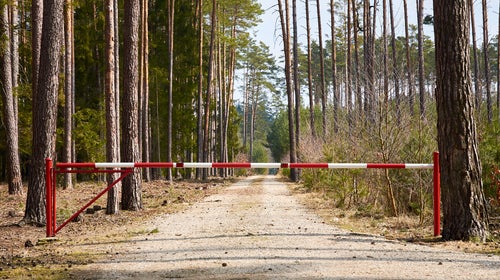Last weekend, one of the biggest chunks of public land in the Southwest closed to the public. Citing wildfire danger and the chance that people would ignore campfire bans, officials closed New Mexico’s Santa Fe National Forest—all 1.6 million acres of it—until further notice.
“Under current conditions, one abandoned campfire could cause a catastrophic wildfire,” supervisor James Melonas said in a statement, “and we are not willing to take that chance.”
Thanks to abysmal snowfall, nearly two-thirds of New Mexico is experiencing . It’s a similar story across the entire Southwest. As a result, forests across the region are being closed pending rain.
In Arizona, where of the state is under extreme drought conditions, Flagstaff residents are unable to bike the San Francisco peaks until lifts its closure; the Four Peaks Wilderness in needs precip before any hikers can explore it. Chunks of Prescott, Kaibab, and Apache-Sitgreaves forests are also off-limits. Stage two bans (no fires, fireworks, chainsaws, welding, and, for the love of God, explosives) are in effect across much of the Southwest, including forests in southern Utah and Colorado.
Sadly, like the megafires of recent years, these closures might become more common.
Drought wasn’t the lone impetus for closing the Santa Fe Forest, located near the state’s capital, in the northern part of New Mexico. There was a fire ban in the area for all of May, but despite this, Forest Service workers say they had to extinguish 83 unattended campfires.
The Forest Service doesn’t track closures nationally, so it’s hard to know how this year stands compared to past years. Arizona hasn’t had such widespread closures , when the public was shut out of the entire Coconino National Forest. The Santa Fe National Forest last closed in 2013, the year the Thompson Ridge and Tres Lagunas wildfires scorched 34,000 acres. This year’s closure is mostly preventative, say forest officials, but at the moment, nine wildfires are in New Mexico and Arizona, including the , which after five days had burned and forced the town of Cimarron, New Mexico, to evacuate.
Sadly, these closures will likely become more common. Climate change has dramatically increased the odds of conflagrations. According to the federal government’s , hot and dry conditions caused a sixfold increase in acres burned between 1970 and 2003. The warming climate—experts predict the Southwest could get ten degrees warmer by 2100—means less precipitation will fall as snow, and already fickle monsoons could become less reliable. When trees do burn, they might never return, replaced forever by shrubs.
The other major problem is that a century of fire suppression has loaded American forests with dense underbrush that stokes more intense fires. Ellis Margolis, a U.S. Geological Survey fire ecologist who lives in Santa Fe, says his tree-ring examinations show that fires used to burn local forests about once a decade—enough to clear out the forests but not enough to kill mature trees. “These places used to burn all the time, but they haven’t for a century or more,” Margolis says. “We can’t exclude fire anymore—we have to learn to live with it. Do we want to do it on our watch, with managed and prescribed fires, or do we want to have wildfires? I think the latter is not the ideal choice for society.”
Those needed changes may save us years or decades from now. But as for this summer and those in the near future? Get used to forests closing more often.


